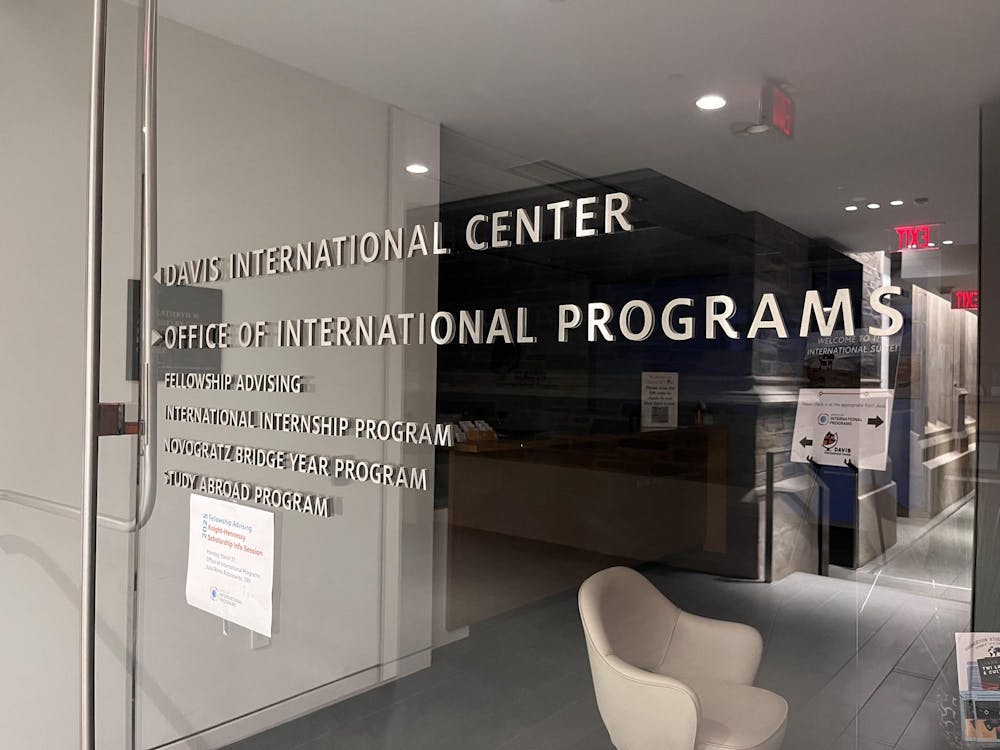Cecilia Rouse, an associate professor in the Wilson School and economics department, recently co-authored a study on the evidence of sexism in orchestra auditions. The report showed that efforts to conceal the identities of musicians auditioning for symphony orchestras increase the chances for women to be selected. She recently spoke with 'Prince' Executive Editor Michael Koike.
'Prince': What did you set out to do?
Rouse: The purpose of the study was to test for evidence of sex-biased hiring. Is there discrimination against hiring?
P: And what did you find?
R: We found some evidence that women are more likely to be advanced from one round to the next if they audition behind a screen than if they do not. Surprisingly, for a semifinal round, [which occurs between the preliminary and final rounds], if a screen is used, women are less likely to be advanced to the final round. This is one of the outstanding puzzles from the paper.
P: What are the grander implications for your study? Do you think orchestras will become more gender-equal?
R: The Vienna Philharmonic, at around the same time that our paper came out, admitted the first woman. I believe that she was a harp player who had been playing with them for years, but was not a member of the orchestra — since you don't need a harp in every piece.
P: Are there any other reasons that women might not be hired as often?

R: We tried to see if there might be other reasons why fewer women seem to be hired. For instance, are women less likely to stay [at the orchestra] for an extended period of time? When we analyzed the data from the concert programs, we found no evidence that women were more likely to turn over than men. So it's likely more of a stereotype than anything.
P: How are the auditions conducted these days with the screen?
R: The attempt to keep the auditions "blind" is taken quite seriously. For example, if women wear heels, one can tell that she's a woman. So the women sometimes take off their shoes. But if the committee doesn't hear footsteps, then it can also know it's a woman [without shoes on]. So the personnel manager will also sometimes provide compensating footsteps [when a man will walk to make the sound]. Other orchestras have put down carpets.
P: Are there any other ways for the committee to determine the gender of the person who is auditioning?

R: They go to great lengths to conceal the identities. But some people nonetheless claim they can tell who is playing, especially a section leader who has had a student for many years. We questioned at length many of the musicians we talked to about whether they were really able to tell who was playing. If they can tell who is playing, that would mean that there's more sex-biased hiring there than we found. For example, there was one instance with a trombone player who had a very unusual way of breathing. So people could tell he was playing.
P: Are you planning any follow-ups to this study?
R: I've thought about a few other studies. For example, you might imagine that by seeing and interacting with the musicians, the [audition committee ] can better judge them. You can tell some things about how the musician plays. One follow-up study we've thought about doing is to test whether turnover has increased after the auditions became blind.
P: What about other people of other races?
R: We would also love to look at other groups, Asians for example. There used to be almost no Asians in the orchestras, and now there are a lot. So did the screen help? But I'm not working on that just now. I've been doing a lot of work on school vouchers.
P: What kind of data did you use and how did you conduct the research?
R: We relied on two kinds of data, which we compiled ourselves. Our main data were records from actual auditions from several symphony orchestras from which we had the names of the individuals present at each round and an indication for whether or not the individual was advanced to the next round (or hired) or not.
In addition, we would know from the institution's policies if for that year and for that round, the audition was blind. So that was what we considered our better data.
P: Where did the other data come from?
R: The other kind of data [came from] the concert programs – where they list who are the members of the orchestra by section. We Xeroxed 1 page from the program for each year (going back several decades) from several orchestras, and we looked for changes over time. We were specifically testing for increased hiring [of women] in years after we knew that the orchestras went to blind auditions.
P: What about in the United States?
R: The Cleveland symphony is the only major symphony orchestra that does not use a screen. But my guess is that one day, they will be pressured into it as well. although they have held out this long.
P: Had there any been a study to show something like this before?
R: The closest analysis has been a type referred to as an "audit study," which is when matched pairs of men and women — called "testing pairs" — are sent out to try and get interviews [for jobs]. David Neumark and some of his students conducted such an analysis for restaurant hiring . . . They sent out resumes, and found some evidence that the typical kind of restaurant — the lower, less expensive type — there was no difference in men and women, but at the "ritzier" restaurants, there was.







